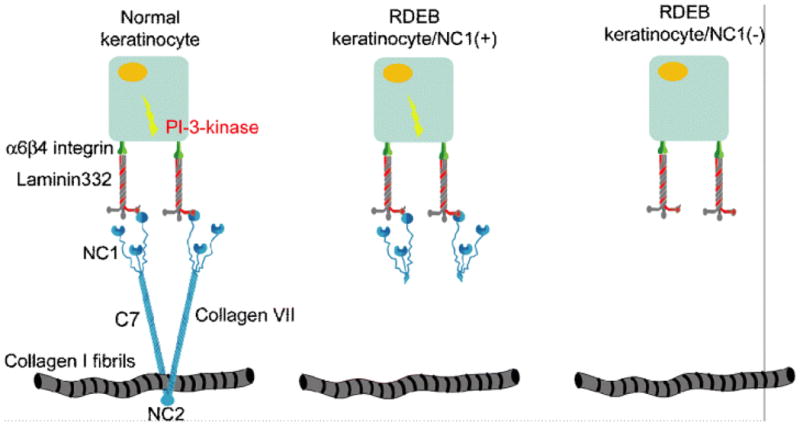Figure 9.

Schematic representation of “anchorless” activation of α6β4 integrin-mediated signal transduction by NC-1(VII) in RDEB keratinocytes. In normal skin, type VII collagen is firmly anchored to the basement membrane zone through interactions with other components of the extracellular matrix. Thus, activation of α6β 4 integrin signaling is restricted to the appropriate tissue compartment within the epidermis (left panel). In contrast, expression of N-terminally truncated type VII collagen lacking the collagenous and the carboxy-terminal domains but depicting the presence of NC-1 may enable α6β4 integrin dependent signal transduction in RDEB keratinocytes which are not firmly anchored in the BMZ, potentially supporting inappropriate cell survival during invasion and metastasis (middle panel). In the case of complete absence of NC-1 expression, activation of α6β4 integrin-dependent signal transduction will not occur (right panel) (Adapted from Rodeck U, Fertala A, Uitto J. Anchorless keratinocyte survival. An emerging pathogenic mechanism for squamous cell carcinoma in recessive dystrophic epidermolysis bullosa. Exp Dermatol 2007; 16: 465–7., with permission).
